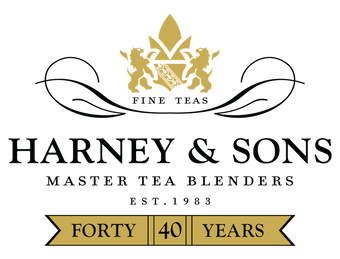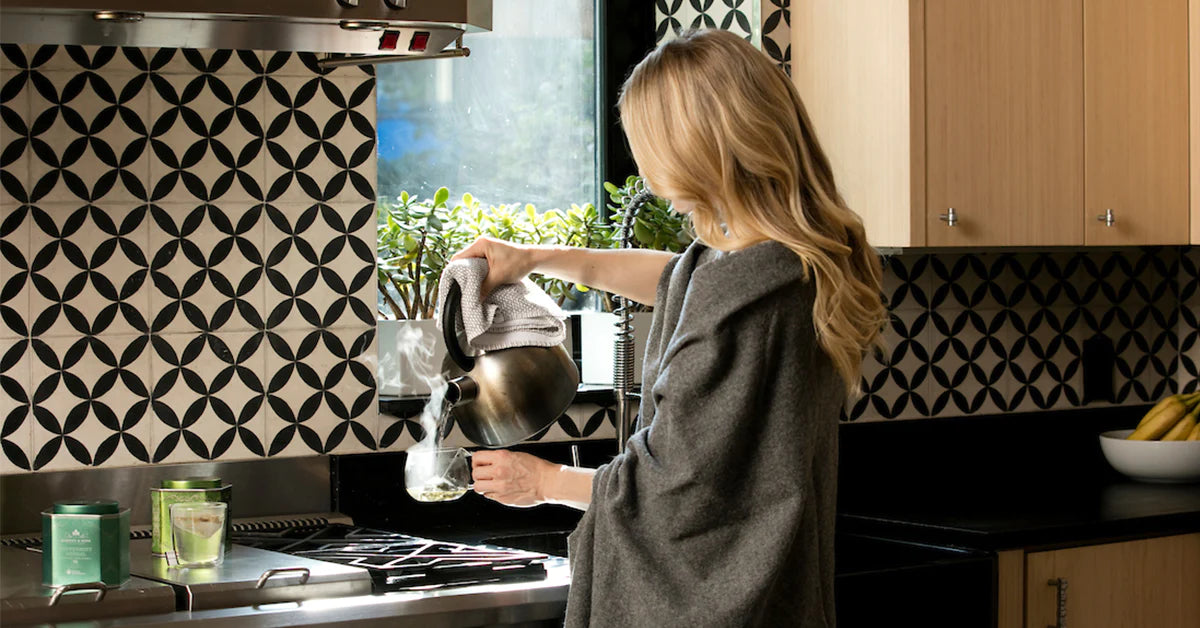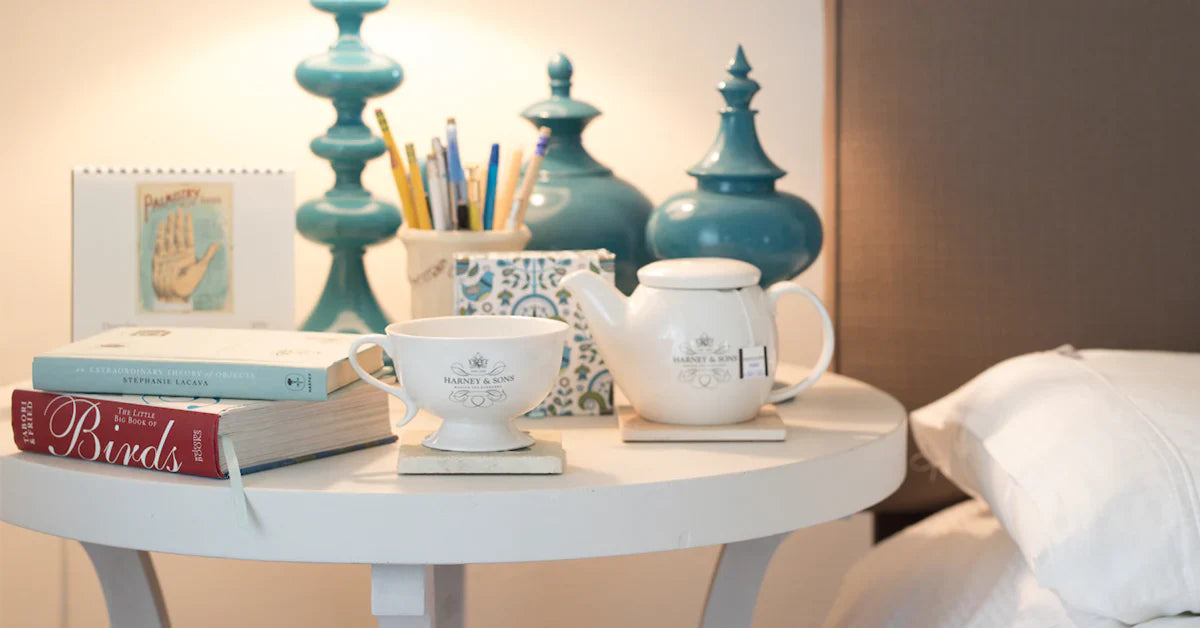Think all cups of tea are created equal? While they may be equally awesome, did you know that herbal teas really aren’t tea at all? Before you spit the herbal tea in your mouth across the room, read on to learn what herbal tea really is… and why it’s still ok to love this tea from another mother.
This Is Not the Camellia Sinensis You Are Looking For
In order for tea to truly be tea, it must be derived from the Camellia sinensis plant. That’s the rule, folks, we didn’t make it up. If there’s one thing our black, white, green, oolong and matcha teas have in common, it’s that they all came from the Camellia sinensis mothership. While the plants themselves and where they were grown and how they’re processed all go into making those teas different, the foundational genetic makeup comes from one type of plant.
Herbal teas—also known as tisanes (pronounced “tea-zahns” like you own a yacht) or herbal infusions, are a blend of herbs, flowers, spices and dried fruits. More importantly, there is not a hint or a drop of Camellia sinensis DNA in an herbal tea. Clearly, while that plant is integral to being categorized as a “true” tea, it doesn’t have a darn thing to do with how delicious your tea tastes.
Also, while we’re giving out pronunciation lessons, the “h” is silent in “herbal” and “herbs” (“ur-buhl” and “urbs” respectively). Why is this different than how you say your Uncle Herb’s name? Again, folks, we don’t make the rules, we just report ‘em.
They’ve Been Hip for Centuries
We can thank the ancient Chinese and Egyptians for deciding to throw some herbs into hot water and drink them. And while we can’t tell you that herbal teas will make your aching hip feel better, we can tell you that many people way back then and still today believe in the health benefits of many herbal teas. There’s good reason for that. Take a look at some of the more common ingredients in herbal teas and their associated good things for us humans and a sampling of Harney teas with those ingredients:
Chamomile
A wonderful calming herb, especially good for drinking before bedtime. Chamomile or Yellow & Blue with chamomile and lavender.
Ginger
Known for its nausea-calming properties. BIO Ginger and Lemon, BIO Ginger and Tumeric.
Oranges, Lemon Balm and Rose Hips
Full of vitamin C. Blood Orange, Lemon Herbal, Indigo Punch, Orange Passion Fruit.
Strawberries and Kiwi
Vitamin C and antioxidants. Strawberry Kiwi Fruit Tea and Berry Young.
Peppermint
In addition to aiding with upset tummies, also a soothing phlegm fighter when you have a cold. Peppermint Herbal, Mint Verbena.
Cinnamon
Warms the body and helps clear congestion. Herbal Hot Cinnamon Spice.
Turmeric
This spice is the main spice used in curry, but the plant’s root is often used to make medicine. Turmeric contains curcumin, a chemical that is thought to help with inflammation. Organic Ginger Turmeric, Golden Milk Glimmer.
Chaga mushrooms
Canadian Chaga mushrooms are an adaptogen with all-natural properties that help the body reduce stress. Chaga Chai.
Rooibos
Rooibos isn’t an ingredient in tea, it’s actually a type of herbal tea derived from the rooibos bush in South Africa. We include it here because of its many beneficial properties, including boosting your immune system, improving heart health and lowering blood pressure, balancing blood sugar, is good for your liver, intestinal system and skin, is caffeine-free and more. We incorporate rooibos into many of our most popular caffeine-free tisanes.

Caffeine? No…and Yes
While the majority of herbal teas are not caffeinated, there are some exceptions. There are herbal teas hailing primarily from the Americas that will serve up your caffeine fix.
- Yerba Mate is a popular South American beverage, a favorite of Argentinian cowboys (gauchos) who needed to stay awake atop their saddles. We carry a mint variety as well.
- Guayusa hails from Ecuador. The guayusa leaves contain caffeine as well as antioxidants. It won’t help you speak Spanish any better, but it can help you stay awake while you practice your Spanish lessons.
- Yaupon is a holly native to America and is a unique Native American tea that is making a comeback. We offer this caffeinated beverage in Yaupon Black and Yaupon Green.
- Allnighter. Sometimes you’ve just got to pull one, and this is the tea to power you through. Blended with both guayusa and yerba mate and flavored with licorice, you will be up as advertised.
- American Buzz contains three caffeinated herbs from the Americas: yaupon from Texas, guayusa from Ecuador and yerba mate from Brazil (as well as some spearmint from Washington for fun).
Brew ‘Em Up, Drink ‘Em Down
Herbal teas are delicious hot or cold. Regardless of how you take your tea, follow the steps below and then add ice if desired. If brewing for iced tea, consider using a larger batch of tea as the ice will dilute the flavor.
- Preheat a teapot by pouring boiling water into it, raising the temperature of the teapot to at least 180°.
- Discard the water. In your teapot, or filter, add 1 teaspoon of loose tea for each cup of tea you're brewing.
- Pour fresh boiling water over the tea or tea bag. This super-saturates the tea, allowing the perfect extraction of the flavor.
- The water temperature should be 212°F (100°C). Let the tea steep for a full 5 minutes.
-
Pour the tea through a strainer into the cups.

DIY Herbal Blends
While Harney offers a wide variety of herbal tea blends, you can get creative at home just like we do in our blending room at our Millerton, New York facility. It’s easy and fun to create your blends, enjoy your own unique beverage and share with family and friends for a one-of-a-kind gift.
You can create a batch of homemade herbal tea from quite a variety of ingredients. These caffeine-free beverages can also be concocted with ingredients that have known health benefits to create a beverage that is not only good but good for you.
Just some of the many common items you can put into your herbal tea concoction:
- Peppermint leaves
- Dried chamomile flowers
- Dried lemon peel
- Peeled and dried fresh ginger strips
- Lavender
- Dried blood oranges
- Rose hips
- Dried apples
- Dried pomegranate
- Dried lime peel
- Dried cranberries
- Dried calendula (aka marigolds)
Use a vegetable peeler to get a nice fine peel on your ingredients. To dry them, you can either use a food dehydrator or your oven. Set it at a low temperature, like 200° F, and dry your items for a couple of hours. Store your ingredients in airtight containers. When ready to make your tea, use one part of each of your ingredients (or a half part for stronger items like ginger that tend to want to take over!), place them in an infuser and proceed to make tea like you normally would. Or, if you have a French press, you can make it that way as well.
Have fun experimenting with different ingredients you have around the house, or go exploring at a local herb market, health food store or spice market. Throw in a cinnamon stick or some honey for a natural sweetener. Add some essential oils like bergamot, peppermint, spearmint, lemon or lavender. Make it uniquely yours.
Whether you buy our herbal teas or create your own, now you know the truth about herbal teas. You can share them with your Uncle Herb over a cup of herbal tea while you watch “Urban Cowboy.” Thank you, English language.



